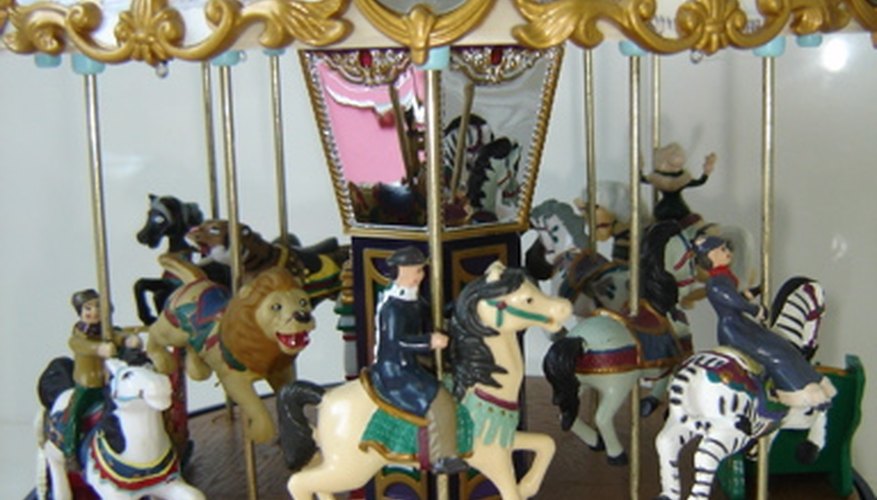It is possible that the funfair originated in Roman times, though this is not a certainty. What is documented is that during the Middle Ages in Europe, there were chartered fairs. These were essentially trade shows that took place roughly between 1200 and 1400. They were gatherings of international traders and their wares, and subsequently included entertainers. It is likely that funfairs are the descendants of chartered fairs.
Eighteenth Century
By the eighteenth century in England, the entertainment portion of the chartered fair had become a spin off known as the funfair, and provided amusement for communities as its bands of unusual humans and wild animals, jugglers, acrobats, puppet shows, peep shows and other acts travelled about the country. Funfairs introduced the first fairground rides around this time.
Funfair Inventions
An English agricultural engineer named Frederick Savage (1828 to 1897) is credited with inventing a steam engine that could operate fair rides, so that they no longer depended on manpower. This invention opened the door to an array of steam-powered rides, including roundabouts and swing boats. In 1863, a prominent example of a steam-powered ride was the merry-go-round at the Midsummer Fair in Halifax, England. The English "Gallopers" ride emerged in 1891, and it came to be known in Europe and the United States as the "Carousel." The first Ferris wheel appeared at the Chicago World's Columbian Exposition in 1893. It was designed by George Washington Gale Ferris, a bridge architect.
- An English agricultural engineer named Frederick Savage (1828 to 1897) is credited with inventing a steam engine that could operate fair rides, so that they no longer depended on manpower.
Locomotive
The Showman's Road Locomotive greatly assisted the mobility of the funfair. It was steam-powered to carry machines, carts, wagons and fair attractions from place to place. It also generated electricity, which provided lighting at the funfair during the evening hours. These locomotives featured musical organs so that there was music to accompany the various rides. Rides had become the main draw, changing the profile of the travelling funfair from game stalls of coconut shies, tests of strength and fortune tellers. The age of the amusement park had arrived, with all its attractions set in a permanent location.
- The Showman's Road Locomotive greatly assisted the mobility of the funfair.
- These locomotives featured musical organs so that there was music to accompany the various rides.
Amusement Parks
Rides were the main attraction at the world's first amusement park, Paul Boyton's Water Chute in Chicago in 1894. Due to the success of this park, Boyton went on to found New York's Coney Island facility in 1895, perhaps the most famous American amusement park. Its Wonder Wheel (Ferris wheel) dates back to 1920. The world's first Cyclone Wooden Roller Coaster opened at Coney Island in 1929.
- Rides were the main attraction at the world's first amusement park, Paul Boyton's Water Chute in Chicago in 1894.
Ongoing Popularity
The popularity of the funfair and amusement park diminished in the United States beginning in the late 1920s. However, they continue to attract patrons in Europe, despite the advent of worldwide theme parks starting in the 1950s, foremost among them the theme parks developed by Walt Disney. In Europe, the ongoing success of the travelling funfair and the amusement park can be seen at venues like Blackpool Pleasure Beach in England, and annual events, such as the Oktoberfest in Germany.
